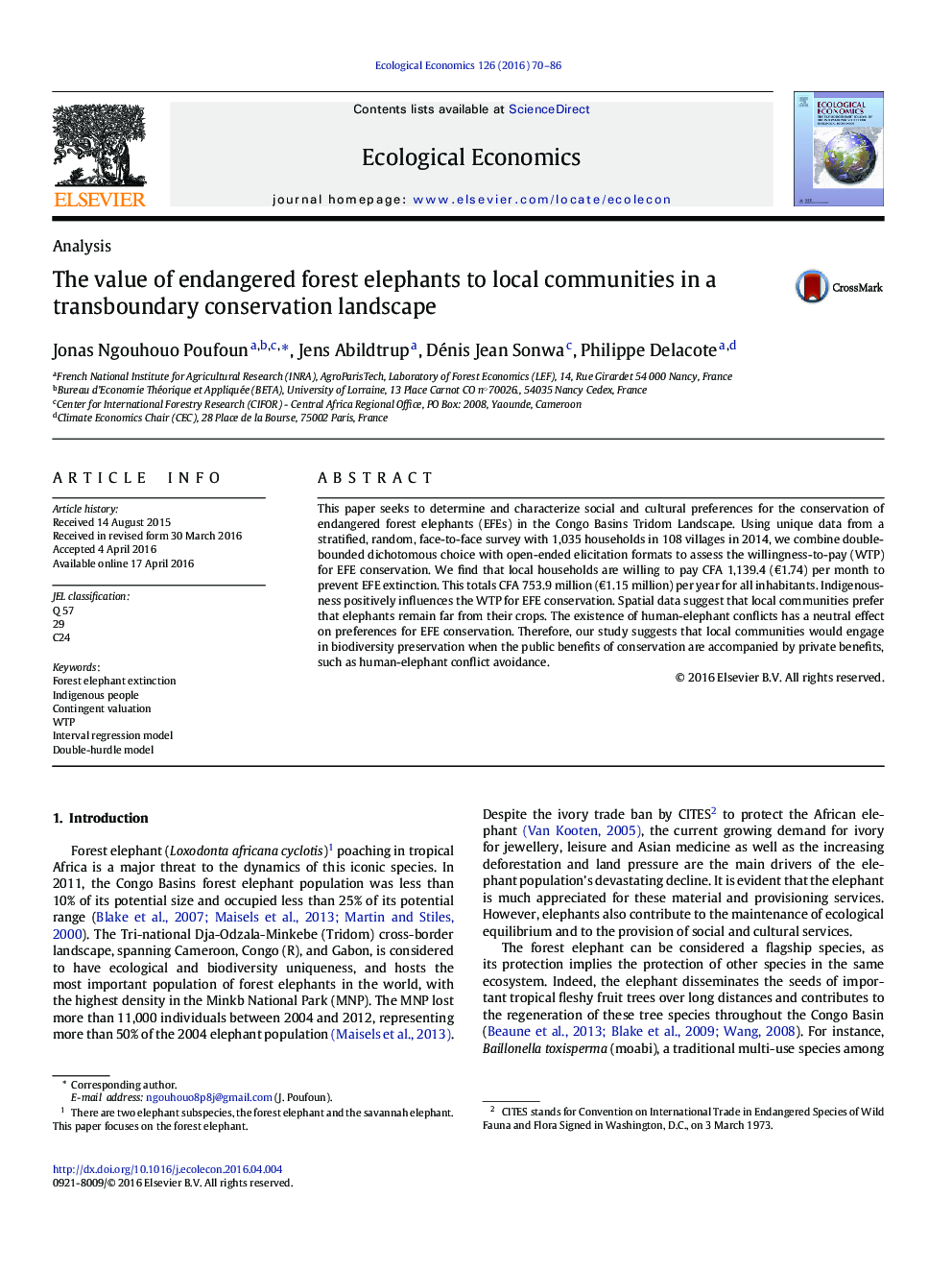| Article ID | Journal | Published Year | Pages | File Type |
|---|---|---|---|---|
| 5049148 | Ecological Economics | 2016 | 17 Pages |
â¢Unique data from a face-to-face survey with 1035 households in Gabon and Cameroonâ¢Local populations are willing to pay for endangered forest elephant conservation and management.â¢Ethnicity an important determinant of willingness-to-pay for elephant conservationâ¢Combining DBDC and OE elicitation formats to increase the statistical efficiencyâ¢Spatial-targeted conservation policies should account for human-elephant conflicts.
This paper seeks to determine and characterize social and cultural preferences for the conservation of endangered forest elephants (EFEs) in the Congo Basins Tridom Landscape. Using unique data from a stratified, random, face-to-face survey with 1,035 households in 108 villages in 2014, we combine double-bounded dichotomous choice with open-ended elicitation formats to assess the willingness-to-pay (WTP) for EFE conservation. We find that local households are willing to pay CFA 1,139.4 (â¬1.74) per month to prevent EFE extinction. This totals CFA 753.9 million (â¬1.15 million) per year for all inhabitants. Indigenousness positively influences the WTP for EFE conservation. Spatial data suggest that local communities prefer that elephants remain far from their crops. The existence of human-elephant conflicts has a neutral effect on preferences for EFE conservation. Therefore, our study suggests that local communities would engage in biodiversity preservation when the public benefits of conservation are accompanied by private benefits, such as human-elephant conflict avoidance.
